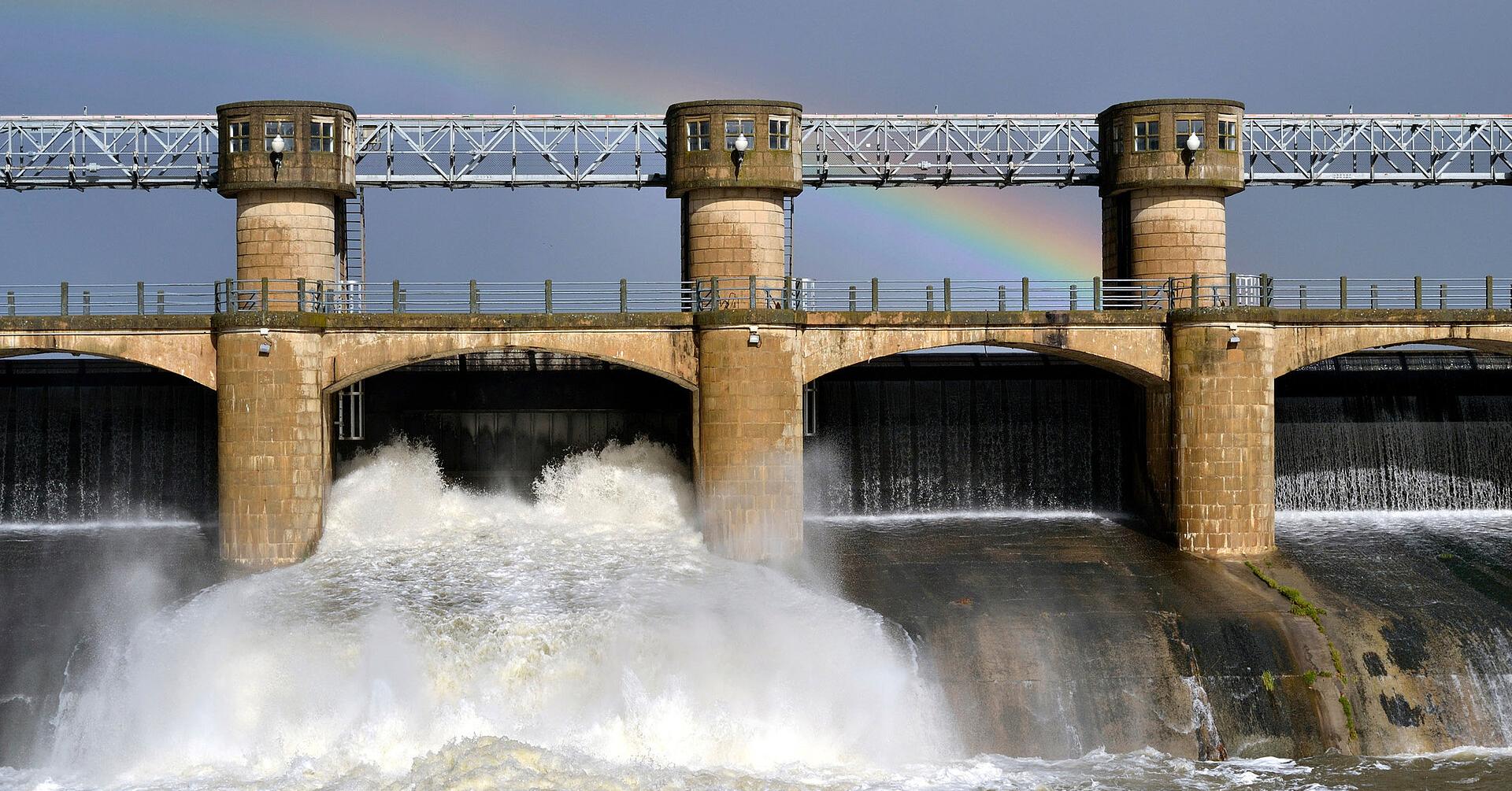Are you curious to know what is a sluice gate? You have come to the right place as I am going to tell you everything about a sluice gate in a very simple explanation. Without further discussion let’s begin to know what is a sluice gate?
Water management has been a vital aspect of human civilization for centuries. One crucial tool used in water control systems is the sluice gate. Whether used in irrigation, flood prevention, or industrial applications, sluice gates play a significant role in regulating water flow. In this blog, we will explore the concept of sluice gates, their design, functionality, and their various applications in engineering and environmental contexts.
What Is A Sluice Gate?
A sluice gate is a mechanical device or structure that controls the flow of water by raising or lowering a barrier. It is typically installed in channels, canals, dams, or other waterways to manage water levels, prevent flooding, divert water, or control the discharge of water from reservoirs. The gate itself can be made of various materials, including wood, metal, or reinforced concrete, depending on the specific application and environmental conditions.
Design And Functionality:
- Structure: Sluice gates are generally rectangular or trapezoidal in shape, designed to fit the dimensions of the waterway they are installed in. They are equipped with hinges or tracks that allow the gate to be raised or lowered as needed.
- Control Mechanism: Sluice gates can be manually operated, hydraulically controlled, or electronically automated, depending on the complexity of the system and the desired level of control. In some cases, multiple gates may be used together to create a more intricate water management system.
- Flow Regulation: By raising or lowering the gate, the flow of water can be controlled. When the gate is fully raised, water flows freely, allowing for increased discharge or channel capacity. Conversely, when the gate is lowered, it restricts the flow, reducing the water level or preventing excess water from passing through.
Applications Of Sluice Gates:
- Flood Prevention: Sluice gates are crucial components of flood control systems. They can be strategically positioned in rivers, canals, or drainage systems to regulate water levels during periods of heavy rainfall. By adjusting the gates, water can be diverted or stored to mitigate flood risks.
- Irrigation: In agricultural settings, sluice gates are used to control the distribution of water for irrigation purposes. By adjusting the gate openings, water can be directed to specific areas or channels to ensure efficient watering of crops.
- Hydropower Generation: Sluice gates are integral to hydropower plants, where they control the flow of water to turbines. By adjusting the gate openings, the volume and force of water can be optimized to generate electricity.
- Water Treatment and Distribution: Sluice gates are used in water treatment plants to control the flow of water through different stages of the treatment process. They also facilitate the distribution of treated water to various destinations, such as reservoirs or distribution networks.
- Environmental Management: Sluice gates play a role in managing water bodies and ecosystems. They can help maintain water levels in wetlands, lakes, or estuaries to preserve habitats and support biodiversity.
Conclusion:
Sluice gates are essential tools for managing water flow in various engineering and environmental applications. Their ability to regulate water levels, prevent flooding, divert water, and control the discharge of water provides valuable benefits to societies worldwide. Whether in flood control systems, irrigation networks, hydropower plants, or water treatment facilities, sluice gates offer effective water management solutions. By harnessing the power of these simple yet versatile devices, we can better navigate the challenges of water control and optimize our use of this precious resource.
Assemble more facts on different topics like these on Countspeed
FAQ
What Is The Purpose Of A Sluice Gate?
What is a sluice gate? The gate that controls a sluice is a valve known as a “sluice gate.” These valves are designed to seal in one direction and commonly are used to control water levels and flow rates in rivers and canals. They also are used in wastewater treatment plants.
What Is The Difference Between A Sluice Gate And A Spillway?
A sluice gate moves up and down in a vertical plane above the spillway in order to control flow. The water passes under the gate as it moves over the spillway. For this reason it is also called a vertical gate or underflow gate. The width of the sluice gate must be specified.
What Is The Difference Between A Stop Gate And A Sluice Gate?
Unlike sluice or slide gates, stop gates are unique. In lieu of being “fixed” and subjected to constant submergence and corrosion, which is common with sluice and slide gates, stop gates are stored above the water.
How Many Types Of Sluice Gates Are There?
The sluice gates are divided into two large groups: Emergency sluice gates operate in the Open/Close mode. That is, 100% of the channel or pipeline section is free or blocked. Process gates have the function of blocking only a part of the channel or pipeline to allow a specified flow rate of water.
I Have Covered All The Following Queries And Topics In The Above Article
What Formula Is Used To Calculate Flow From A Sluice Gate?
What Is A Sluice Gate Used For
What Is A Tailgate Compared To A Sluice Gate
What Is The Purpose Of A Sluice Gate
What Is Sluice Gate In Dam
Sluice Gate Vs Slide Gate
Sluice Way
Sluice Gate In Fish Pond
Sluice Gate Manufacturers
How Does A Sluice Gate Work
What Is A Sluice Gate
What is a sluice gate in real life
What is a sluice gate?
